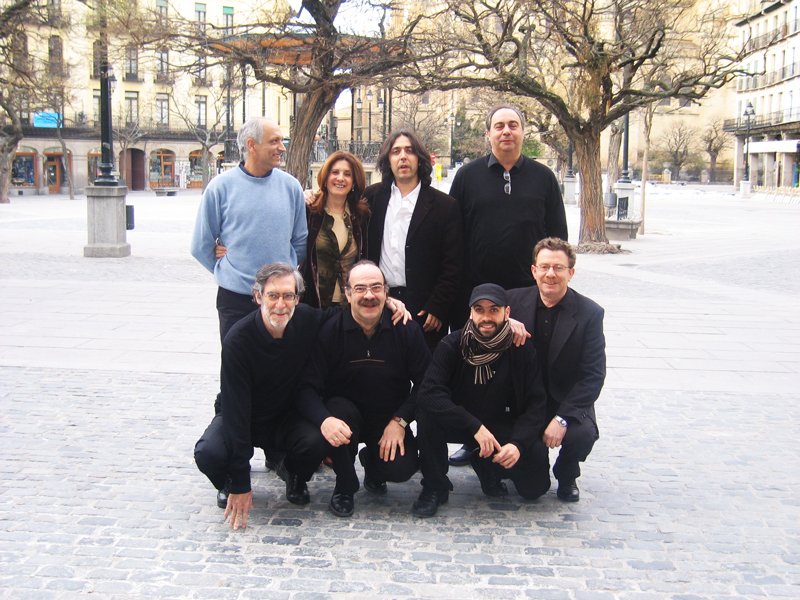(headline image: Nuevo Mester de Juglaría in 2006)
Nuevo Mester de Juglaría, a prominent folk music group from Segovia, Spain, has been a staple of Castilian musical traditions since its formation in 1969. With 28 albums, two books, and international performances, they are one of Spain’s longest-standing musical acts.
The group began as “Clan 5” and gained recognition in a Madrid folk festival, winning with the song “Romance del Conde Lara.” Clan 5 was formed at that time by Luis Martín, Rafael San Frutos, Fernando Ortiz, Marián Nieto and Milagros Olmos, Their name was later changed to Nuevo Mester de Juglaría after a suggestion from a radio presenter.
Their first major performance occurred on January 4, 1970, in Logroño, where they shared the stage with Julio Iglesias. They soon signed with Philips Records and released their debut album, Romances y Canciones Populares.
Notable performances include their concert at Expo 92 in Seville and appearances at Madrid’s Plaza Mayor during San Isidro festivities. They have also participated in international folk festivals in Mexico and Italy.
Nuevo Mester de Juglaría also ventured into ethnomusicology, collecting traditional songs from villages across Castille. Their work was greatly influenced by Agapito Marazuela, a significant figure in Spanish folk music.
In 2019, the City of Segovia honored the group as “soul and sentimental memory of Segovia and Castilla,” recognizing their members as highly regarded citizens and artists.
Although the members have varied throughout the years, the recent lineup included Llanos Monreal: vocals, percussion, guitar, and flute; Fernando Ortiz: vocals, dulzaina, guitar, flutes, requinto and saxophone; Rafael San Frutos: vocals, guitar, keyboard and dulzaina; Francisco García: vocals, bass and double bass; and Luis Martín: vocals, bandurria and lute.
The live band also features Jesús Martín on vocals, guitar, and lute; Álvaro Mendía on keyboards; and
Rodrigo Muñoz on drums and percussion.
Discography:
Romances y canciones populares (Fonogram, 1971)
Levántate, niña (Fonogram, 1972)
Romances y canciones populares, vol. II (Fonogram, 1973)
Romances y canciones populares, vol. III (Fonogram, 1974)
Romance de «El Pernales» (Fonogram, 1975)
Segovia viva (Fonogram, 1975)
Los Comuneros (Fonogram, 1976)
Párate y te contaré (Fonogram, 1977)
10 años de canción tradicional (Fonogram, 1978)
Contentos estamos (Fonogram, 1980)
A bombo y platillo (Fonogram, 1982)
El día de la función (Fonogram, 1984)
Recopilatorio 2 (Fonogram, 1984)
Coplas del tío Sidín (Fonogram, 1986)
Para bailar (Fonogram, 1988)
La voz del vino (Fonogram, 1990)
Plaza Mayor (Fonogram, 1992)
25 Aniversario (Fonogram, 1994)
Todos en un cantar (Fonogram, 1996)
Del Romancero segoviano (Fonogram, 1998)
A ti, querido cochino (Universal, 2001)
El Romancero III (Universal, 2003)
Los Comuneros 25 años después (Universal, 2004)
Recopilatorio (Universal, (Universal, 2006)
Todo Duero (Universal, 2007)
Titirimundi (Universal, 2009)
Gabarrerías (2017)


